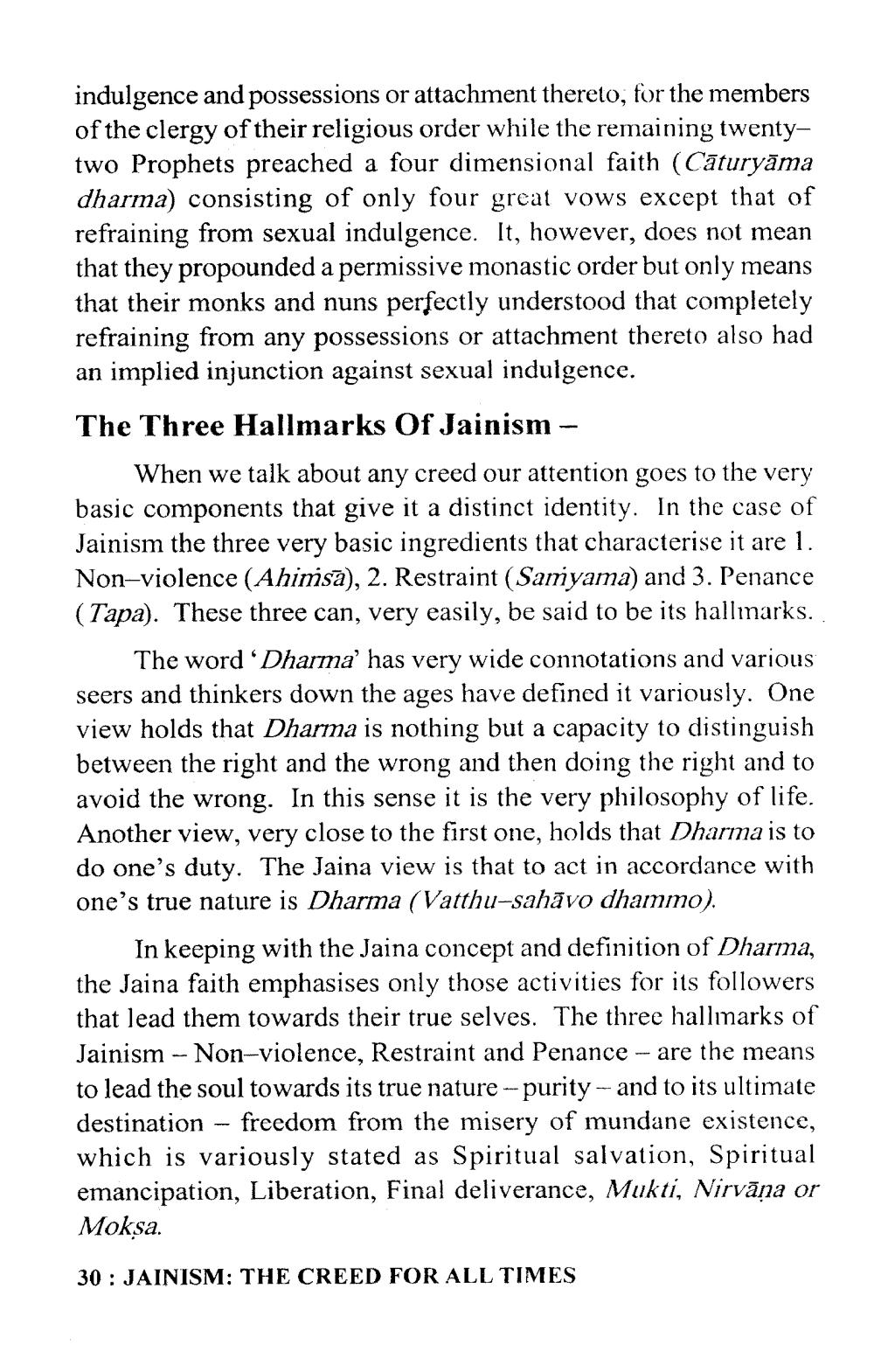________________
indulgence and possessions or attachment thereto, for the members of the clergy of their religious order while the remaining twentytwo Prophets preached a four dimensional faith (Cāturyāma dharma) consisting of only four great vows except that of refraining from sexual indulgence. It, however, does not mean that they propounded a permissive monastic order but only means that their monks and nuns perfectly understood that completely refraining from any possessions or attachment thereto also had an implied injunction against sexual indulgence. The Three Hallmarks Of Jainism -
When we talk about any creed our attention goes to the very basic components that give it a distinct identity. In the case of Jainism the three very basic ingredients that characterise it are 1. Non-violence (Ahimsā), 2. Restraint (Samyama) and 3. Penance (Tapa). These three can, very easily, be said to be its hallmarks.
The word 'Dharma' has very wide connotations and various seers and thinkers down the ages have defined it variously. One view holds that Dharma is nothing but a capacity to distinguish between the right and the wrong and then doing the right and to avoid the wrong. In this sense it is the very philosophy of life. Another view, very close to the first one, holds that Dharma is to do one's duty. The Jaina view is that to act in accordance with one's true nature is Dharma (Vatthu-sahāvo dhammo).
In keeping with the Jaina concept and definition of Dharma, the Jaina faith emphasises only those activities for its followers that lead them towards their true selves. The three hallmarks of Jainism - Non-violence, Restraint and Penance - are the means to lead the soul towards its true nature -- purity- and to its ultimate destination - freedom from the misery of mundane existence, which is variously stated as Spiritual salvation, Spiritual emancipation, Liberation, Final deliverance, Mukti, Nirvāna or Moksa.
30 : JAINISM: THE CREED FOR ALL TIMES




